Contents
Guide

Figure and rose, a coloured glass detail from a cabinet in The Mackintosh House.
Rose motif, a leaded glass panel from a bookcase now in the Glasgow School of Art, but originally designed for William Davidsons house, Windyhill.
CONTENTS

Fiona Davidson

Charles Rennie Mackintosh, photographed in 1893, at the age of 25, by T. & R. Annan & Sons of Glasgow. He was an architect by profession yet presented himself here more as an artist.
In any enumeration of the creative geniuses of modern architecture, Charles Rennie Mackintosh must be counted among the first.
HERMANN MUTHESIUS, 1902

Charles Rennie Mackintosh was an innovator, and is undoubtedly one of Scotlands most celebrated architects. His astounding buildings creatively reinterpreted the past and opened the way for the Modern Movement. Architecture was his first love, though he was also a highly accomplished artist and designer of interiors, furniture, metalwork, glass and textiles. In addition his graphic design work, using nature and organic plant forms, made him an early exponent of Symbolism and Art Nouveau. In the later years of his life he produced watercolour paintings of intense power and subtlety. His extraordinary work is still regarded today as innovative and modern, and continues to astonish and delight art lovers everywhere.

 rom a very early age Mackintosh, who was born in Glasgow in 1868, was determined to be an architect. Interestingly his ill-health as a child enabled him to pursue his artistic interests and ambitions. Besides not being very strong, Charles had two physical deformities. He was born with a contracted sinew in one foot, giving him an awkward limp, and then as the result of a chill after a game of football, the muscles of his right eye were permanently affected. The doctor prescribed a very suitable remedy, which was that the boy should be encouraged to take plenty of exercise in the open air and to have long holidays whenever possible. This advice was exactly to Charless liking.
rom a very early age Mackintosh, who was born in Glasgow in 1868, was determined to be an architect. Interestingly his ill-health as a child enabled him to pursue his artistic interests and ambitions. Besides not being very strong, Charles had two physical deformities. He was born with a contracted sinew in one foot, giving him an awkward limp, and then as the result of a chill after a game of football, the muscles of his right eye were permanently affected. The doctor prescribed a very suitable remedy, which was that the boy should be encouraged to take plenty of exercise in the open air and to have long holidays whenever possible. This advice was exactly to Charless liking.
In addition to an annual family holiday, he saw a great deal of Scotland during his early days. He loved to wander over the countryside, appreciating its beauty by sketching houses, trees and plants. Although his father, a police superintendent, was very much against his son choosing architecture as a career, he eventually gave in to him, on condition that he worked extremely hard. So when Charles left school at the age of 15 he became articled to the architect John Hutchison of Glasgow, where he worked as an apprentice until 1889. In the same year Mackintosh joined the Glasgow practice of architects Honeyman and Keppie, a newly formed practice where he entered as a draughtsman, becoming a partner in 1901.
From the very beginning of his apprenticeship in 1884, Mackintosh had been attending evening classes at the Glasgow School of Art. After only two years he was doing so well in his exams and projects that he was given free studentships. Attendance at the classes was not compulsory, therefore only the keenest students attended. Since the response was so poor, the Glasgow Institute of Architects decided to set up prizes, in the hope of stimulating some enthusiasm among the students. Mackintosh won two out of the three prizes given and was soon to win a national competition organized by South Kensington Museums which gained him a few lines in the Building News.
In 1890 Mackintosh won the Alexander Thomson Travelling Scholarship with his design for a public hall. The prize money of 60 enabled him to make a tour of Italy, which he did, leaving Glasgow in March 1891 and arriving in Naples on 5 April. He kept a diary during his tour and produced a mass of drawings which he later entered into an annual exhibition of the Glasgow School of Art Student Club. One adjudicator, Sir James Guthrie, held Mackintoshs work in high esteem and when told that they were the work of an architectural student, he turned to the Head of the School and said fiercely, But hang it Newbery, this man ought to be an artist.
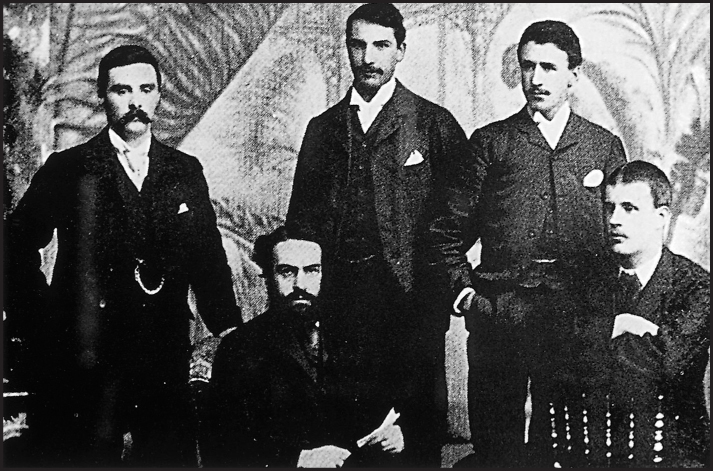
Mackintosh, standing right, with colleagues at the architectural firm, Honeyman and Keppie, c.1890. His friend Herbert McNair is standing next to him.

Glasgow was a thriving, cultivated city grown rich on the profits of its cotton mills, coal mines and shipyards. By the 1890s it was the sixth largest city in Europe. It was in this energetic and exciting atmosphere that Mackintosh grew up.
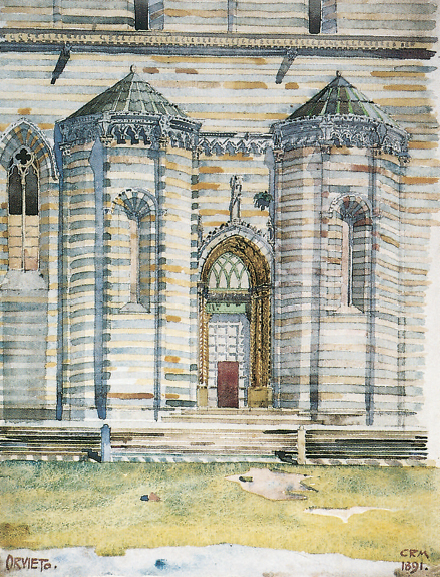
Orvieto Cathedral, a watercolour painted by Mackintosh during his tour of Italy in 1891, where he was fascinated by the early Christian, medieval and early Renaissance buildings. He was particularly inspired by their detail and decoration.

A sketch Mackintosh made of Maybole Castle, Ayrshire, in 1895. He enjoyed drawing the traditional buildings of the Scottish countryside from early in his career.

 lthough Mackintosh was working within the conventions of formal architecture during the early 1890s, he began to work more freely as an artist, producing sketches, watercolours, posters and craftwork. An insatiable desire for experiment, particularly with organic images, led him to try to express an ideal or convey a message using symbolism.
lthough Mackintosh was working within the conventions of formal architecture during the early 1890s, he began to work more freely as an artist, producing sketches, watercolours, posters and craftwork. An insatiable desire for experiment, particularly with organic images, led him to try to express an ideal or convey a message using symbolism.
During all his architectural projects, Mackintosh had conscientiously kept up his evening classes at the Glasgow School of Art, where he became popular with the younger architects and the art students. It was at the office of Honeyman and Keppie that he met fellow apprentice Herbert McNair, and it was not long before the two became great friends. McNair also attended evening classes at the Art School, where both men became absorbed in new, experimental decorative styles.
At the same time two sisters, Frances and Margaret Macdonald, day students at the Art School, were also exploring new ways of drawing and decoration. Their work showed a striking likeness to that of Charles Mackintosh and Herbert McNair, not only in technique and form but also in content.

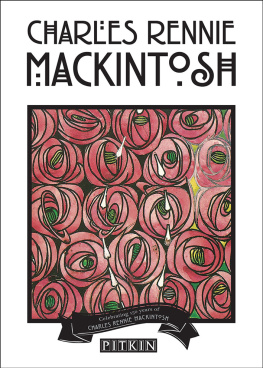




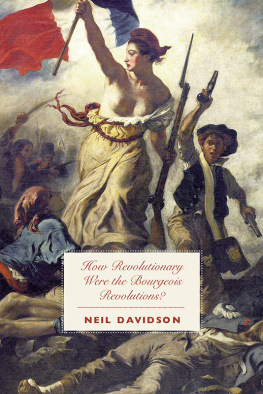
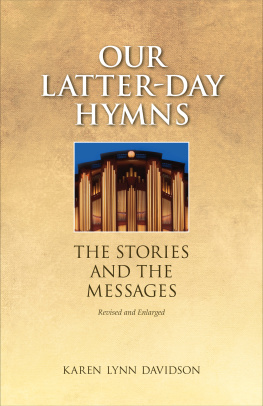

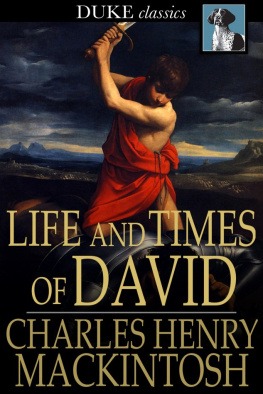


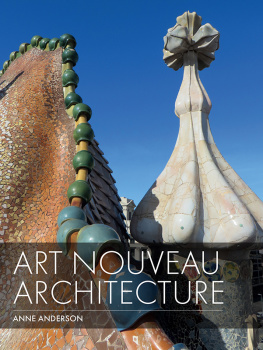
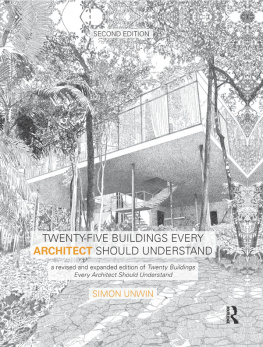


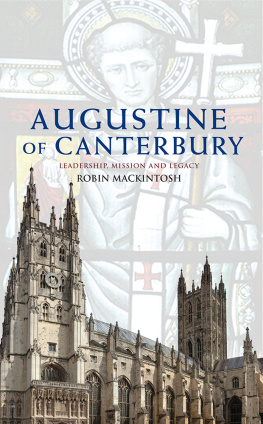

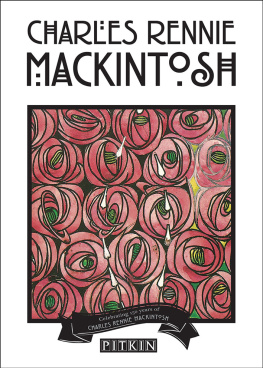
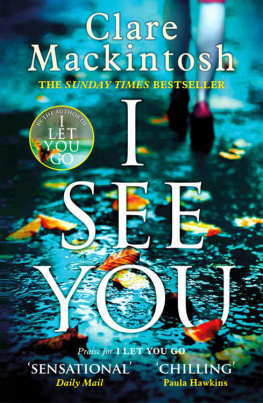






 rom a very early age Mackintosh, who was born in Glasgow in 1868, was determined to be an architect. Interestingly his ill-health as a child enabled him to pursue his artistic interests and ambitions. Besides not being very strong, Charles had two physical deformities. He was born with a contracted sinew in one foot, giving him an awkward limp, and then as the result of a chill after a game of football, the muscles of his right eye were permanently affected. The doctor prescribed a very suitable remedy, which was that the boy should be encouraged to take plenty of exercise in the open air and to have long holidays whenever possible. This advice was exactly to Charless liking.
rom a very early age Mackintosh, who was born in Glasgow in 1868, was determined to be an architect. Interestingly his ill-health as a child enabled him to pursue his artistic interests and ambitions. Besides not being very strong, Charles had two physical deformities. He was born with a contracted sinew in one foot, giving him an awkward limp, and then as the result of a chill after a game of football, the muscles of his right eye were permanently affected. The doctor prescribed a very suitable remedy, which was that the boy should be encouraged to take plenty of exercise in the open air and to have long holidays whenever possible. This advice was exactly to Charless liking.




 lthough Mackintosh was working within the conventions of formal architecture during the early 1890s, he began to work more freely as an artist, producing sketches, watercolours, posters and craftwork. An insatiable desire for experiment, particularly with organic images, led him to try to express an ideal or convey a message using symbolism.
lthough Mackintosh was working within the conventions of formal architecture during the early 1890s, he began to work more freely as an artist, producing sketches, watercolours, posters and craftwork. An insatiable desire for experiment, particularly with organic images, led him to try to express an ideal or convey a message using symbolism.